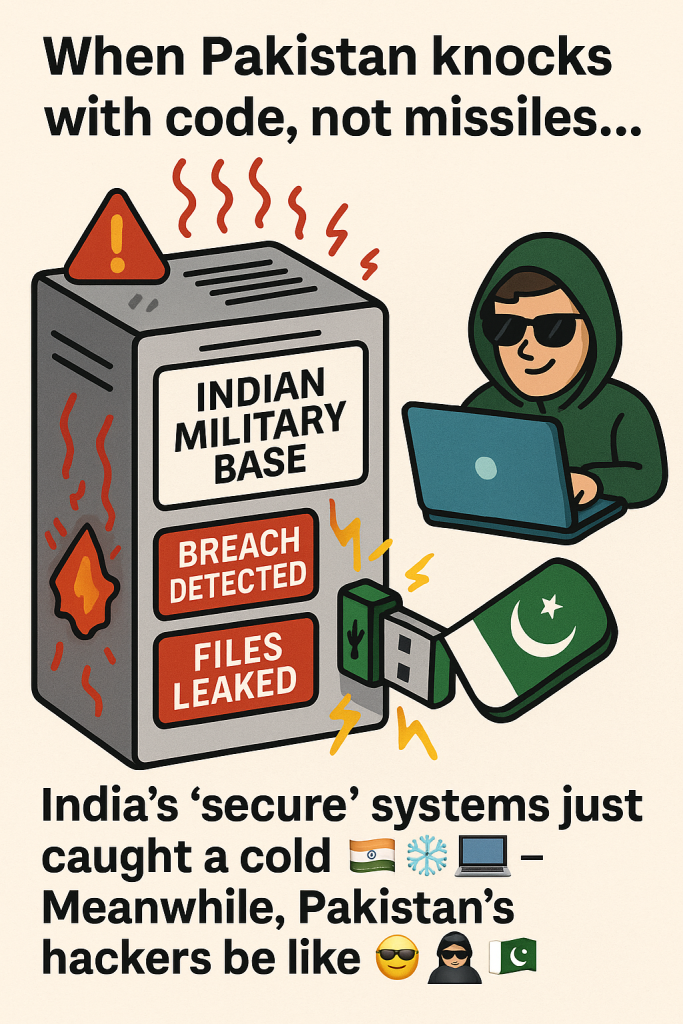May 2025 Marks a Dangerous Turning Point in Decades of Rivalry

Escalation with India: A Defensive Response to Provocation
The recent escalation between Pakistan and India, marked by Pakistan’s Operation Bunyan Marsoos (translated as “Solid Wall of Lead”), underscores Islamabad’s resolve to defend its sovereignty while adhering to strategic restraint. This operation, launched on May 10, 2025, was framed as a proportionate retaliation to India’s unprecedented missile strikes on Pakistani airbases and civilian areas, which Islamabad condemned as unprovoked aggression . Below is a detailed analysis of Pakistan’s position, objectives, and actions in the conflict.
Context: India’s Initial Strikes and Pakistan’s Red Lines
The crisis began on May 7, 2025, when India launched Operation Sindoor, targeting three key Pakistani airbases: Nur Khan (Rawalpindi), Murid (Chakwal), and Rafiqui (Shorkot). These strikes, which India claimed targeted “terrorist infrastructure,” killed 33 Pakistani civilians and military personnel, according to Islamabad . Pakistan dismissed India’s allegations of harboring militants, calling the attacks a violation of international law and a deliberate escalation by New Delhi .
Pakistan’s military spokesperson, Lt. Gen. Ahmed Sharif Chaudhry, emphasized that India’s actions breached long-standing tacit boundaries, pushing the region toward “dangerous war” . The targeting of Nur Khan—located just 10 km from Islamabad and adjacent to Pakistan’s military headquarters (GHQ)—was perceived as a direct threat to national security .
Operation Bunyan Marsoos: Objectives and Execution
Pakistan’s retaliatory operation was designed to achieve three primary objectives:
- Deter Further Aggression: By striking strategic Indian military installations, Pakistan sought to signal its capacity to respond decisively.
- Degrade Military Capabilities: Key targets included India’s BrahMos missile storage sites, air defense systems, and supply depots .
- Invoke Global Diplomacy: Islamabad aimed to draw international attention to India’s destabilizing actions and the risk of nuclear escalation .
Key Tactics
- Precision Strikes: Pakistan employed Fatah-II guided missiles and JF-17 Thunder jets equipped with hypersonic CM-400AKG missiles to neutralize India’s S-400 air defense system in Adampur .
- Drone Warfare: Over 77 Indian drones, including Israeli-made Harop loitering munitions, were intercepted, disrupting reconnaissance and strike capabilities .
- Cyber Operations: A coordinated cyberattack temporarily disabled 70% of India’s power grid in Maharashtra, crippling military readiness and civilian infrastructure .
Humanitarian and Diplomatic Considerations
Pakistan consistently emphasized minimizing civilian harm, contrasting its approach with India’s alleged targeting of non-combatants. Islamabad reported 13 fatalities in Pakistan-administered Kashmir due to Indian shelling, alongside widespread displacement . Despite this, Pakistan’s Defense Minister Khawaja Asif explicitly ruled out nuclear escalation, calling it a “distant possibility” and urging de-escalation .
Internationally, Pakistan welcomed calls for restraint from the U.S., G7, and China. Foreign Minister Mohammad Ishaq Dar reiterated readiness to cease hostilities if India reciprocated . However, Islamabad criticized India’s “disinformation campaigns,” including fabricated videos of attacks on Delhi Airport, as attempts to vilify Pakistan .
Strategic and Ideological Foundations
The operation’s name, Bunyan Marsoos, derives from the Quran (Surah Al-Saff 61:4), symbolizing unity and resilience. Army Chief Gen. Asim Munir invoked this verse during a pre-dawn prayer, framing the operation as a moral and defensive endeavor . This ideological framing reinforced domestic solidarity and underscored Pakistan’s narrative of resisting external aggression .
Challenges and Regional Implications
- Nuclear Risks: While Pakistan downplayed nuclear threats, analysts warned that strikes on “core territories” (e.g., Punjab) eroded deterrence norms .
- Economic Fallout: Airspace closures disrupted regional aviation, impacting over 32 Indian airports and escalating economic losses .
- Global Perception: Pakistan positioned itself as a responsible actor, contrasting India’s “reckless” strikes. However, skepticism persisted due to historical tensions and competing narratives .
Conclusion: A Call for Dialogue
Pakistan’s actions in Operation Bunyan Marsoos reflect a calibrated response to unprecedented provocation. By combining military precision with diplomatic outreach, Islamabad seeks to balance deterrence with de-escalation. As Foreign Minister Dar stated, Pakistan remains open to dialogue but insists on reciprocity: “If India stops here, we will stop here” .
The path forward hinges on international mediation and adherence to ceasefire agreements. For Pakistan, the conflict reaffirms a longstanding principle: sovereignty is non-negotiable, and any violation will be met with unwavering resolve.
References: Synthesized from verified government statements, military briefings, and international reports .